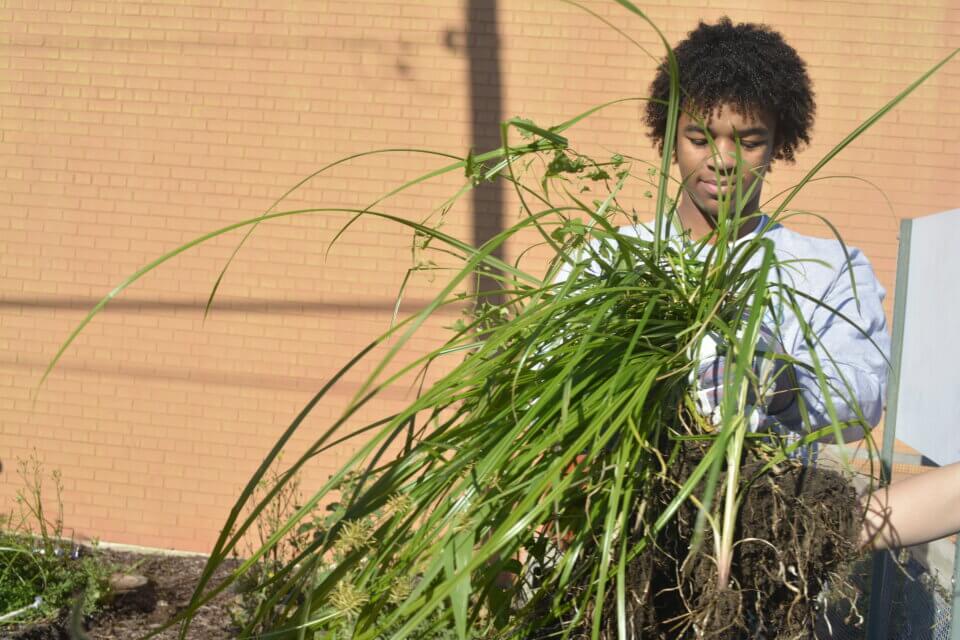January 19, 2023 On this date in 2006, the New Horizons spacecraft was launched. The primary objective was to explore Pluto and its moons, which it successfully completed in 2015. Additionally, New Horizons sent back images of the Kuiper Belt Object Arrokoth. In June 2022 the spacecraft was put into hibernation mode to reduce wear… Continue reading
Astronomy Fact of the Day: January 18, 2023
January 18, 2023 It is possible to approximate angular degrees in the sky with only your fingers on an outstretched hand. A pinkie held up to the sky estimates 1°, first three pointer fingers is 5°, the width of a fist is 10°. By outstretching your first pointer finger and your pinky, it is possible… Continue reading
Black Bear
Black Bear, Ursus americanus Today is #MuseumSelfieDay! Our Collections Manager snapped a pic with Shadow, the Science Center’s American black bear, to celebrate. Did you know that black bears live in 40 of the US states? An estimated 100,000 of these omnivores live in Alaska where Shadow called home. Found only in North America, approximately 800,000… Continue reading
Astronomy Fact of the Day: January 17, 2023
January 17, 2023 On this date in 1969, the manned Soviet spacecraft Soyuz 4 returned to Earth. It was during this mission, along with the Soyuz 5 mission, that the first docking between two spacecraft was achieved by the Soviet Union. A Soviet diagram of the Soyuz docking. Image credit: drewexmachina/Andrew LePage
The YES Program’s Agriscience Component Highlights the Intersection of Health and Agriculture
Support science for our future. Make a gift to the Science Center’s YES Program to help support the Science Center’s education programs. Header image photo credit: Harmony Cooper, YES Teen It was a sunny Saturday on September 24—perfect weather for a collaborative project and a special moment in the Youth Exploring Science (YES) Program’s Agriscience… Continue reading
Astronomy Fact of the Day: January 16, 2023
January 16, 2023 Today the Moon reaches its descending node. This is when the Moon starts to appear south of Earth’s ecliptic. If new or full moon occurs at the descending node, we see an eclipse. If it is new moon, a solar eclipse occurs and if at full moon, a lunar eclipse occurs. The… Continue reading
Astronomy Fact of the Day: January 15, 2023
January 15, 2023 Today the Moon reached last quarter phase. This means the Moon rise after midnight tonight. Each day for the next week we will see thinner waning crescent phases each day as the Moon completes another synodic cycle on January 21, 2023. Unfortunately, this means the Moon will rise later each morning until… Continue reading
Night Sky Update: January 13 – 21, 2023
This is the Saint Louis Science Center’s NIGHT SKY UPDATE for the week of Friday, January 13, 2023. Information updated weekly or as needed. Times given as local St. Louis time which is Central Standard Time (CST). For definitions of terminology used in the night sky update, click the highlighted text. If relying on times… Continue reading
Astronomy Fact of the Day: January 14, 2023
January 14, 2023 Today is Shannon Lucid’s birthday. This American astronaut was the first woman to complete 5 trips into space. She also served aboard the Russian space station, Mir. Shannon Lucid’s official NASA portrait. Image credit: NASA
Astronomy Fact of the Day: January 13, 2023
January 13, 2023 Mercury reached inferior conjunction on January 7, 2023. This is when the planet passed between the Earth and Sun. Soon, Mercury will climb out of the Sun’s glare in the east before sunrise. This will be one of Mercury’s best apparitions this year so be on the lookout for Mercury in the… Continue reading








